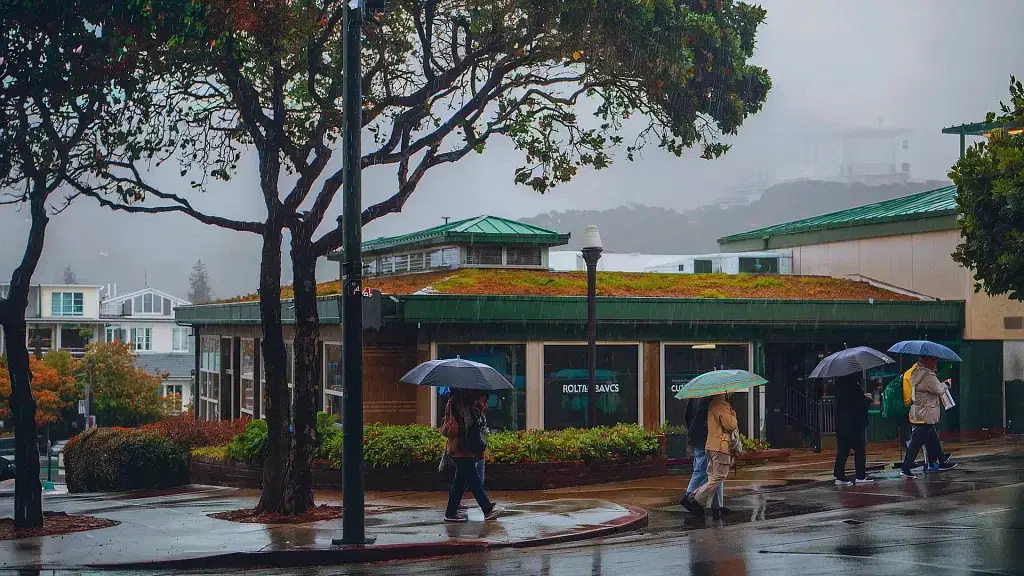Weatherproofing Your Community: Seasonal Maintenance Guides for Bay Area HOAs
Ever notice how Mother Nature seems to target HOA properties with special enthusiasm? That perfect storm always hits the weekend your property manager is on vacation. The hottest day of summer coincides with your irrigation system’s dramatic death. And somehow, the most stunning tree on your property waits until 3 AM during the worst rainstorm to crash through someone’s roof. After 47 years helping East Bay communities dodge these bullets, SLPM Homeowners Association Management Services has learned that while you can’t control the weather, you can absolutely prepare for it.
The East Bay’s Weather Personality Disorder

Our region might look small on a map, but it hosts more microclimates than a reality show has drama. Piedmont’s foggy mornings differ dramatically from Livermore’s scorching afternoons. Homes in the Oakland hills face different threats than condos in Fremont’s flatlands.
This climate split personality creates maintenance headaches for HOA boards. A maintenance schedule that works perfectly in foggy Alameda might fail completely in sunny Pleasanton. Materials that last decades in San Leandro might deteriorate in half the time in the salt air of Hayward’s shoreline communities.
The good news? Breaking maintenance into seasonal tasks makes these challenges manageable. Let’s walk through a year of weather-ready strategies tailored specifically for East Bay communities.
Spring: Fixing Winter’s Mess
Roof and Gutter Reality Check
Spring offers the perfect window to assess winter damage before summer heat bakes small problems into big ones.
Roof inspections take on special importance in the East Bay, where a single winter storm can drop several inches of rain in hours. Those charming Spanish-style tile roofs throughout Berkeley might look gorgeous, but they hide cracked flashings that silently soak attic insulation until ceilings collapse.
One Rockridge community learned this lesson when residents noticed mysterious brown spots on third-floor apartment ceilings. What seemed like minor staining actually signaled a completely failed roof membrane that had been leaking for months. The repair bill: $37,000, compared to the $2,200 an early inspection would have cost.
Practical steps for spring roof maintenance:
- Check for loose or missing tiles, especially on slopes facing prevailing storms
- Clear gutters of winter debris—particularly important in communities with mature trees
- Inspect attic spaces for water stains before they become visible in living areas
- Look for damaged flashing around chimneys, vents, and skylights
Landscaping That Won’t Make EBMUD Mad at You
Spring marks the transition from “will it ever stop raining?” to “will we ever see rain again?” East Bay water districts enforce strict irrigation rules from April through October, with hefty fines for violations.
Smart communities use this season to adjust landscaping strategies:
- Replace thirsty annual flowers with native drought-resistant perennials
- Apply mulch while soil still holds moisture to reduce summer water needs
- Inspect and repair irrigation systems before daily temperature spikes
- Convert water-intensive turf to drought-tolerant ground covers
A Walnut Creek community replaced just 30% of their common area grass with native plants and cut their summer water bill by 42%. The conversion qualified for EBMUD’s Lawn Conversion Rebate program, covering nearly half the project cost.
Finding and Fixing Winter Damage
Winter moisture reveals structural weaknesses like a detective with a flashlight. Spring inspections should target:
- Wood rot in shaded areas, particularly on north-facing walls
- Cracked concrete where water freezes and expands in cooler inland areas
- Warped siding where gutters overflowed during heavy rains
- Pest intrusions where wet wood created welcoming habitats
A Piedmont community spotted telltale carpenter ant trails during their spring inspection, leading them to discover significant structural damage to a pergola that would have collapsed during their summer barbecue. Catching it early saved them both money and potential injuries.
Summer: Beating the Heat and Drought
Exterior Protection That Actually Works
Bay Area summer sun might feel wonderful on vacation, but it’s brutally hard on buildings. UV damage causes more than just fading—it breaks down materials at the molecular level.
Protective measures that work in our climate:
- Schedule exterior painting during moderate temperature windows (avoid paint application in direct sun)
- Use elastomeric coatings on stucco to allow movement during temperature fluctuations
- Apply UV-resistant sealants to exposed wood decking and railings
- Install awnings or solar screens on west-facing windows to reduce heat gain
A Dublin townhome community installed retractable awnings on their community center’s western exposure and cut air conditioning costs by 23% while making the space usable on hot afternoons.
Water-Smart Strategies That Keep Things Green
Nothing makes residents grumpier than watching their carefully tended landscaping turn brown. Yet water restrictions are a fact of life in the East Bay.
Water conservation approaches that keep both plants and people happy:
- Install smart irrigation controllers that adjust based on actual weather conditions
- Water deeply but infrequently to encourage deeper root growth
- Schedule irrigation for early morning hours to minimize evaporation
- Group plants with similar water needs together (hydrozoning)
San Ramon’s Windemere community installed weather-based controllers that automatically adjust watering times based on temperature, rainfall, and soil moisture. They reduced water usage by 36% while improving plant health.
Wildfire Readiness (Because Nobody Wants That Drama)
For communities in the Oakland and Berkeley hills, summer brings the specter of wildfire. After the devastating 1991 Oakland firestorm, protecting communities became more science than art.
Fire-smart practices include:
- Maintaining defensible space by clearing dead vegetation within 100 feet of structures
- Removing ladder fuels that allow ground fires to climb into trees
- Choosing fire-resistant plants for landscaping near buildings
- Creating evacuation plans specific to your community layout
An Albany HOA near the hills created a fire safety committee that conducts monthly inspections during fire season. They work with professional landscapers to maintain defensible space and host annual information sessions for residents on evacuation procedures.
Fall: Battening Down the Hatches
Drainage Systems That Actually Drain
Nothing reveals drainage problems like the first major rainstorm. By then, it’s too late for anything but emergency patches. Fall offers the perfect window to make sure water goes where it should.
Drainage checks should include:
- Clearing all gutters and downspouts before significant rainfall
- Inspecting underground drain pipes for blockages or root intrusion
- Checking that water flows away from foundations, not toward them
- Testing sump pumps in flood-prone areas before they’re needed
A Hayward community learned about drainage the hard way when the first major storm of 2023 flooded their underground parking garage. The culprit? A single shopping bag that blocked a critical drain pipe. Their new fall maintenance checklist includes camera inspections of all main drainage lines.
Sealing Leaks Before They Matter
Water always finds the path of least resistance—usually right into your most expensive materials. Fall is the time to seal every potential entry point:
- Recaulk windows and door frames where summer heat may have caused shrinkage
- Inspect roofing, especially around penetrations like vents and chimneys
- Check weatherstripping on common area doors and windows
- Seal concrete cracks before water can freeze and expand them
A Concord community with historic single-pane windows saved thousands by applying temporary window film and fixing weatherstripping rather than replacing windows. The simple fixes reduced heating costs by 18% while preserving the buildings’ architectural character.
Emergency Prep That Goes Beyond Sandbags
Smart communities prepare for the worst while hoping for the best:
- Stock sand and bags in accessible locations for quick deployment
- Trim trees away from buildings and power lines before storm season
- Test backup generators and emergency lighting systems
- Create clear communication channels for weather emergencies
When atmospheric rivers hit the East Bay in 2023, Fremont’s Ardenwood complex was ready with pre-positioned supplies and a resident notification system. Their advance planning prevented significant damage while nearby communities scrambled for last-minute solutions.
Winter: Staying Dry and Warm
Heating Systems That Actually Heat
Nothing generates maintenance calls faster than heating system failures during cold snaps. Winter preparation should include:
- Professional inspection of all HVAC equipment in common areas
- Cleaning or replacing filters in community buildings
- Checking insulation in exposed areas like pool equipment rooms
- Protecting pipes vulnerable to freezing in unheated spaces
A San Leandro community saved $12,000 in emergency repairs by identifying and replacing a failing boiler system during their scheduled fall maintenance rather than waiting for the inevitable mid-winter breakdown.
Finding Leaks Before They Find You
Winter rain exposes every weakness in your building envelope:
- Deploy maintenance staff during actual rainstorms to spot active leaks
- Use moisture meters to detect water intrusion before visible damage occurs
- Install water leak sensors in common areas with plumbing
- Check for condensation issues in poorly ventilated spaces
Castro Valley’s Palomares Hills community installed simple water sensors in their clubhouse kitchen and bathrooms. When a supply line failed at 2 AM, the early alert system notified their maintenance team before the water could spread to the recently renovated meeting room.
Keeping Unwanted Winter Guests Out
As temperatures drop, your buildings look mighty appealing to local wildlife:
- Seal entry points around utility penetrations
- Install rodent-proof door sweeps on common area doors
- Check vents and screens for damage that allows access
- Trim tree branches away from rooflines to prevent rodent highways
One Albany community battled recurring rodent issues until they discovered that beautiful ivy covering their building walls created perfect climbing lattices for rats. Removing the ground-to-roof vegetation eliminated the problem almost overnight.
Making Seasonal Maintenance Actually Happen
Even the best maintenance plan fails without proper implementation. Here’s how successful East Bay communities stay on track:
Create a Realistic Calendar
Break maintenance tasks into manageable chunks based on:
- Seasonal weather patterns specific to your microclimate
- Vendor availability (everyone needs gutter cleaning in November)
- Budget cycles that align with your fiscal year
- Resident impact considerations
A Pleasanton community created a visual calendar that shows exactly what maintenance happens each month. This simple tool helps residents understand why certain projects occur when they do and reduces complaints about timing.
Budget Properly for Weather Resilience
Unpredictable weather requires financial flexibility:
- Maintain adequate reserves for storm damage repairs
- Budget for preventive measures that reduce emergency costs
- Plan for increasingly extreme weather patterns
- Include contingency funds for unexpected climate events
One Livermore community established a specific “extreme weather fund” separate from their regular reserves. This dedicated account ensures they can respond quickly to unusual weather events without depleting general maintenance reserves.
Partner With Weather-Savvy Professionals
Not all vendors understand East Bay microclimates:
- Choose contractors familiar with local weather patterns
- Verify that materials specified suit your specific conditions
- Seek maintenance partners with experience in your building type
- Establish ongoing relationships with reliable emergency response teams
A Berkeley hillside community works exclusively with landscapers experienced in erosion control on steep slopes. This specialized knowledge has prevented the soil slippage problems that plague neighboring properties after heavy rains.
Why Professional Management Makes Weather Less Scary

With 47 years of experience watching East Bay weather patterns, SLPM Homeowners Association Management Services brings valuable perspective to seasonal maintenance planning:
- We track microclimate-specific maintenance needs across different communities
- Our vendor network includes specialists for all weather-related challenges
- Our preventive maintenance programs catch small issues before they become weather emergencies
- Our emergency response protocols ensure quick action when Mother Nature strikes
Communities that tackle weather challenges with professional guidance consistently spend less on emergency repairs while maintaining more stable assessment levels.
Your community deserves protection from whatever weather comes its way. Professional management ensures you’re not just reacting to the last storm but preparing for the next one.
Complete our FREE HOA Management Proposal Form to receive a customized weatherproofing strategy addressing your community’s unique architecture, microclimate, and budgetary needs.
Sources and Citations for this article
- California Building Standards Code (Title 24)
- EBMUD Lawn Conversion Rebates
- Alameda County Fire Department Defensible Space Guidelines
Additional Guidance


